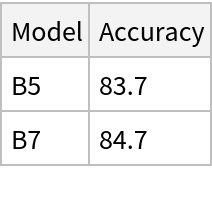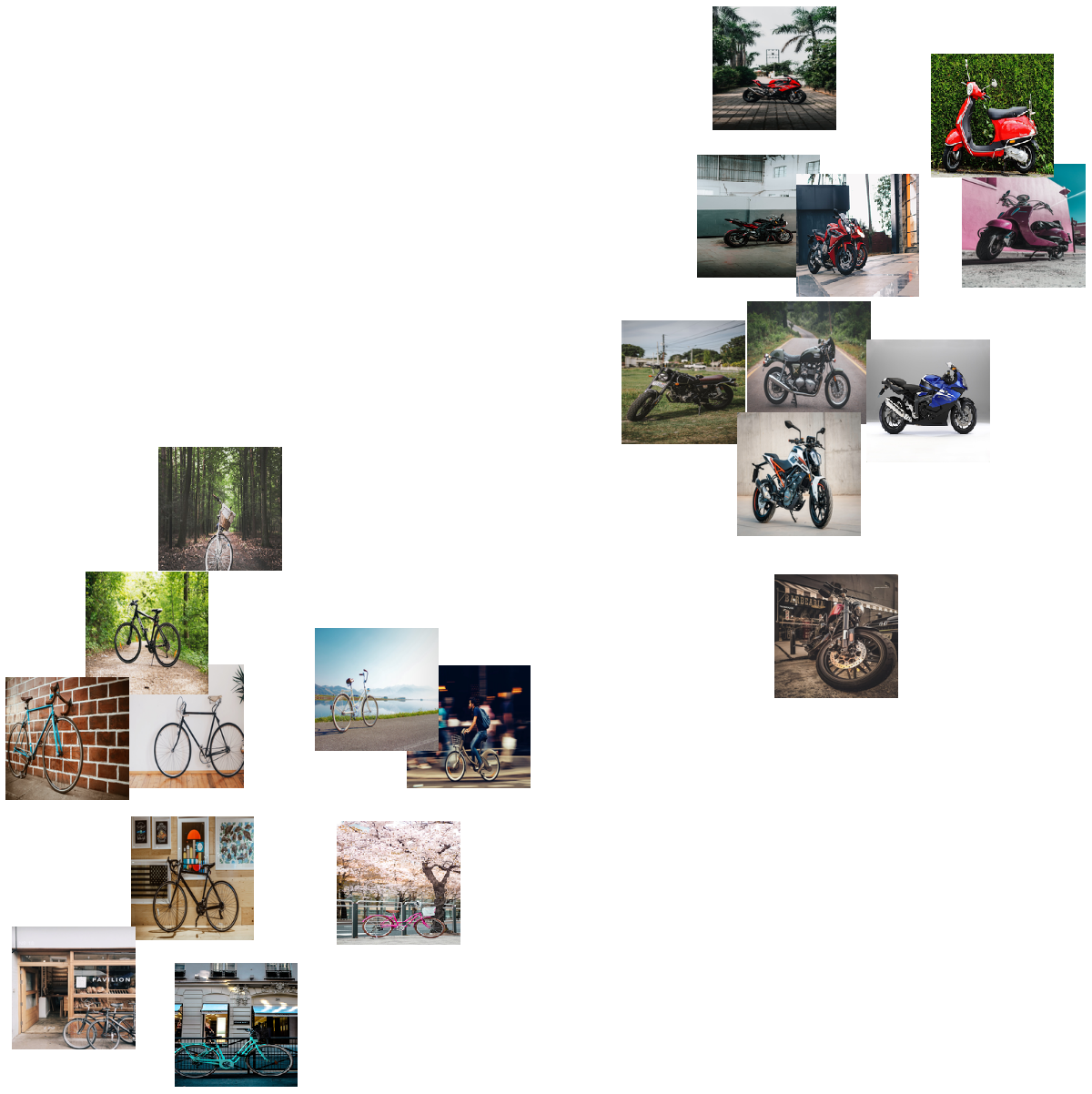Resource retrieval
Get the pre-trained net:
NetModel parameters
This model consists of a family of individual nets, each identified by a specific parameter combination. Inspect the available parameters:
Pick a non-default net by specifying the parameters:
Pick a non-default uninitialized net:
Basic usage
Classify an image:
The prediction is an Entity object, which can be queried:
Get a list of available properties of the predicted Entity:
Obtain the probabilities of the 10 most likely entities predicted by the net:
An object outside the list of the ImageNet classes will be misidentified:
Obtain the list of names of all available classes:
Feature extraction
Remove the last two layers of the trained net so that the net produces a vector representation of an image:
Get a set of images:
Visualize the features of a set of images:
Visualize convolutional weights
Extract the weights of the first convolutional layer in the trained net:
Show the dimensions of the weights:
Visualize the weights as a list of 48 images of size 3x3:
Transfer learning
Use the pre-trained model to build a classifier for telling apart images of motorcycles and bicycles. Create a test set and a training set:
Remove the linear layer from the pre-trained net:
Create a new net composed of the pre-trained net followed by a linear layer and a softmax layer:
Train on the dataset, freezing all the weights except for those in the "linearNew" layer (use TargetDevice -> "GPU" for training on a GPU):
Perfect accuracy is obtained on the test set:
Net information
Inspect the number of parameters of all arrays in the net:
Obtain the total number of parameters:
Obtain the layer type counts:
Export to MXNet
Export the net into a format that can be opened in MXNet:
Export also creates a net.params file containing parameters:
Get the size of the parameter file:


![(* Evaluate this cell to get the example input *) CloudGet["https://www.wolframcloud.com/obj/073a1403-557f-439a-af50-c40fa95ae664"]](https://www.wolframcloud.com/obj/resourcesystem/images/3b2/3b2800d6-d571-4cd1-8857-0d927b421ebb/56edeabde2d6efd7.png)

![(* Evaluate this cell to get the example input *) CloudGet["https://www.wolframcloud.com/obj/0c14ef93-75d7-4dda-b9fa-cf616056cac5"]](https://www.wolframcloud.com/obj/resourcesystem/images/3b2/3b2800d6-d571-4cd1-8857-0d927b421ebb/2126435cb4460849.png)

![(* Evaluate this cell to get the example input *) CloudGet["https://www.wolframcloud.com/obj/51af2229-5046-4c9a-8ee5-252b80f9bc4c"]](https://www.wolframcloud.com/obj/resourcesystem/images/3b2/3b2800d6-d571-4cd1-8857-0d927b421ebb/207bc0b5b6e98ca0.png)
![EntityValue[
NetExtract[
NetModel["EfficientNet Trained on ImageNet with RandAugment"], "Output"][["Labels"]], "Name"]](https://www.wolframcloud.com/obj/resourcesystem/images/3b2/3b2800d6-d571-4cd1-8857-0d927b421ebb/6f784f20de4d49a8.png)

![(* Evaluate this cell to get the example input *) CloudGet["https://www.wolframcloud.com/obj/d23620ff-d336-4b21-9a53-de01a354a1d1"]](https://www.wolframcloud.com/obj/resourcesystem/images/3b2/3b2800d6-d571-4cd1-8857-0d927b421ebb/2379671fa2c7e640.png)


![(* Evaluate this cell to get the example input *) CloudGet["https://www.wolframcloud.com/obj/de6cc77a-c36c-459e-8830-008177a6d5d3"]](https://www.wolframcloud.com/obj/resourcesystem/images/3b2/3b2800d6-d571-4cd1-8857-0d927b421ebb/17291d8e331b240f.png)
![(* Evaluate this cell to get the example input *) CloudGet["https://www.wolframcloud.com/obj/3e7470e3-dccb-421a-adc6-e537afc3bf02"]](https://www.wolframcloud.com/obj/resourcesystem/images/3b2/3b2800d6-d571-4cd1-8857-0d927b421ebb/35c726478a025f21.png)
![newNet = NetChain[<|"pretrainedNet" -> tempNet, "linearNew" -> LinearLayer[], "softmax" -> SoftmaxLayer[]|>, "Output" -> NetDecoder[{"Class", {"bicycle", "motorcycle"}}]]](https://www.wolframcloud.com/obj/resourcesystem/images/3b2/3b2800d6-d571-4cd1-8857-0d927b421ebb/7fba290bb95bf677.png)
